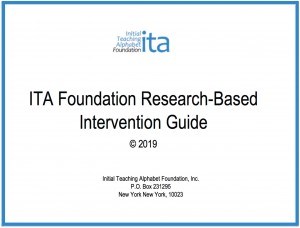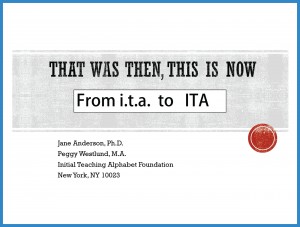
That was Then: The History of ITA
In September, 1961, the first test of whether a phonetically-regular adaptation of the regular English alphabet (ITA) would help children learn to read more easily began in England. Over the next three years, 89 experimental first-year classrooms used an ITA version of the Janet and John basal readers, while 69 control classrooms used the same books written in traditional orthography (t.o.). Teachers in the experimental classrooms were given two days of training with ITA Study results revealed that the ITA groups made significantly greater progress in the ITA reading series.
Even more significant, by the end of the third year of school when all children were reading traditional orthography books, the ITA group achieved significantly superior accuracy, speed and comprehension in reading compared to the control group that had been using t.o. since the beginning. (John Downing. 1967. The ITA Symposium: Research Report on the British Experiment with ITA Hove, Sussex: King, Thorne, and Stace, Ltd.
So began the story of how the initial teaching alphabet (ITA) was introduced as a reading program to alleviate the challenge of teaching beginning readers “crack the code” of English spelling.
This is Now: ITA for Remediation of Dyslexia
Recent research has provided additional support for its use with young children learning how to read, as well as with children who have failed to attain reading mastery with traditional methods and the traditional alphabet. These studies, as well as testimonials of parents and teachers who have used ITA for remediation of reading difficulties, are included in this section.
ITA Foundation Research-Based Intervention Guide
For information on how you can help your struggling readers overcome the bottleneck phonological deficit that has stymied their reading progress, download our White Paper and listen to “That was Then, This is Now: From i.t.a. to ITA”



